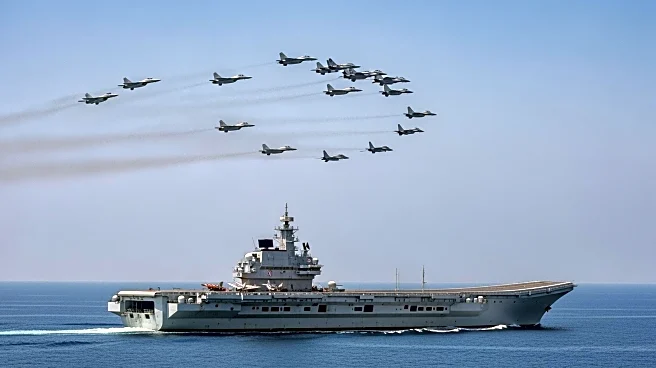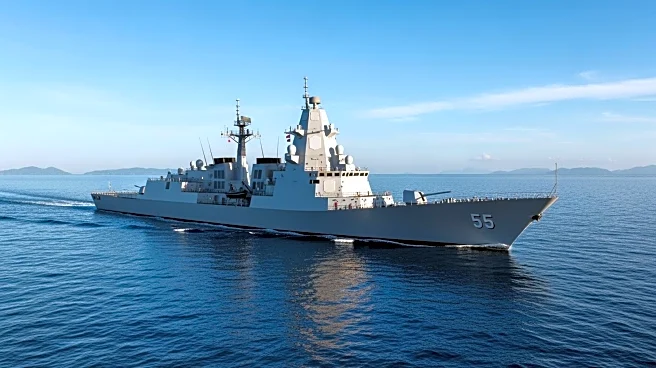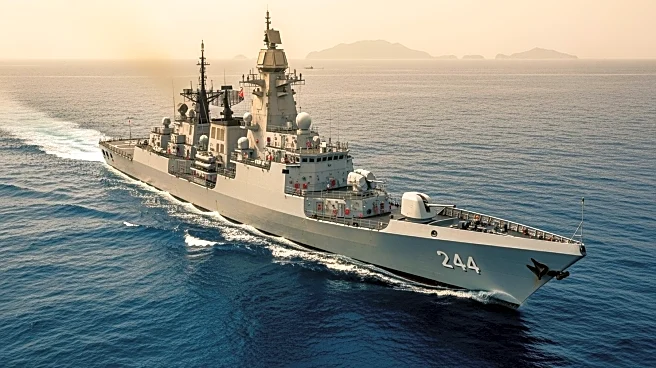What's Happening?
The British aircraft carrier HMS Prince of Wales has conducted defense drills with the Indian air force in the Arabian Sea. The exercise tested the carrier's ability to defend against jet attacks, following
recent simulated missile attacks by Chinese aircraft on a British warship. The drills involved launching F-35B stealth fighter jets from the carrier to protect it, while Indian Su-30 and Jaguar jets attempted to penetrate the carrier's defenses. This exercise is part of a broader initiative to maintain a naval presence in the Pacific amid U.S.-China competition.
Why It's Important?
The defense drills highlight the strategic importance of naval strength and interoperability between the UK and India in the Indo-Pacific region. As China continues to assert its territorial claims, these exercises demonstrate a commitment to regional stability and deterrence. The collaboration enhances mutual trust and strengthens defense capabilities, showcasing the ability to counter potential threats from advanced military technologies like China's anti-ship missiles.
What's Next?
The HMS Prince of Wales may continue its deployment with further exercises and port calls, reinforcing naval partnerships and strategic presence in the region. The ongoing collaboration between the UK and India could lead to more joint military initiatives, potentially influencing regional security dynamics. The exercise's success may encourage other nations to participate in similar drills, fostering greater cooperation in the Indo-Pacific.
Beyond the Headlines
The drills reflect broader geopolitical shifts, with nations seeking to balance power in the Indo-Pacific. The focus on naval strength and defense capabilities may drive advancements in military technology and strategic alliances. This development also raises questions about the long-term impact on regional security and the potential for diplomatic engagements to address territorial disputes.











